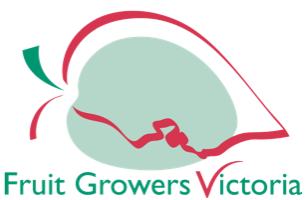Tree colour up close. It's worth the time to take a closer look.
Here, we talk about the delight of autumnal colour available from April through June each year, but late spring and early summer offer their own colour delight - you just have to look a little more carefully for it and understand why it is so.

While springs visual charms may be a bit more subtle than autumn, coming as they do after bare limbs and drab browns and greys of winter, they are just as good to see.
As trees break winter dormancy and their buds develop into various leaves, twigs, and flowers, foliage may change colours in varying combinations and intensities before turning to the basic early summer green. This whole process – from first swelling of flower and leaf buds through fruiting and full leaf expansion – occurs over many weeks and offers a changing array of colours, depending on a number of variables, including location, elevation, current growing conditions and of course the tree itself. The spring show is often red or variations through oranges and yellow – so it is noticeable particularly as we escape a dull and dreary winter.
Leaves are commonly tinged with some red when they first appear. Gradually, they turn green as they produce the pigment, chlorophyll. But this process requires light and warmth. If those newly emerged leaves are greeted by a cold snap or prolonged cloud cover, they can’t make the chlorophyll they require to be green and will remain coloured for an extended period of time.
I am told that a tree’s motivation for producing reddish new growth is to deter sucking insects which are discouraged by the colour red and therefore go seek food elsewhere. New spring growth is also folded and closed until there is enough warmth in the air to open to harness the energy of the sun and the making of chlorophyll.
There are some scientists in the US that suggest that the red colour also helps trees withstand cold and screens them from damaging ultraviolet rays and air pollution. Taking all of these factors into account, and whether right or wrong, overall this is a brilliant strategy particularly for a fresh spring leaf just getting started on a full growing season.
As an aside, the reds, purples, and colour combinations in between that decorate autumn foliage come from a group of pigments in the cells of leaves called anthocyanins. During the summer growing season, phosphate is at a high level. It has a vital role in the breakdown of the sugars manufactured by chlorophyll. But in autumn, phosphate along with the other chemicals and nutrients, move out of the leaf into the stem of the plant. When this happens, the sugar-breakdown process changes, leading to the production of anthocyanin pigments. The brighter the light during this period, the greater the production of anthocyanins and the more brilliant the resulting colour display. When the days of autumn are bright and cool, and the nights are chilly but not freezing, the brightest colourations usually develop.
Anthocyanins temporarily colour the edges of some of the very young leaves in spring too as they unfold from their buds. Here, you will find some good examples of red foliage colour interest to keep a look out for this season.
Receive all the latest news, product information, collections, projects, tips and special offers straight to your inbox each month or so.
Receive all the latest news, product information, collections, projects, tips and special offers straight to your inbox each month or so.
Find a Tree
With more than 400 trees in our library we can help you find the perfect tree for your next project.
Ask a question
We're here to help if you need any advice on selecting the perfect tree for your next project.
Newsletter
Receive all the latest news, product information, collections, projects, tips and special offers straight to your inbox each month or so.
Treefinder can help you identify the perfect tree for your next project!
With over 400 tree varieties for review, the Treefinder app enables you to conveniently browse and compile a list of trees suitable for a number of common landscaping uses - from attracting birds to creating a formal screen or hedge. By selecting desired size, foliage, and a few categories, Treefinder opens up a world of possibilities.
Once you've found the perfect tree you can click through to our website for more information, availability and a quote.

We are specialists in the environmentally sustainable production of premium quality advanced landscaping trees and screens.
For more than 49 years Speciality Trees has been a leader in the production and supply of advanced environmentally sustainable, containerised landscape trees for local government, the landscaping industry and retailers.
Learn more














